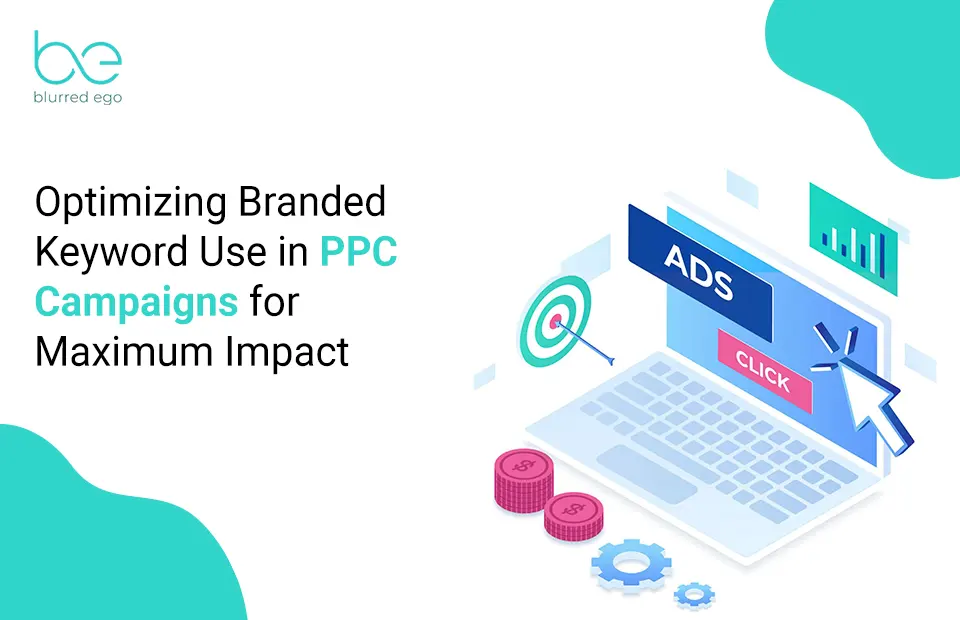In Simple terms, a canonical is a special type of link tag that tells search engines which is the preferred URL of a webpage out of the multiple URLs that might lead to the same content. This helps in avoiding duplicate content issues and consolidating all signals for a particular page under one URL.
Canonical links were introduced by Google in 2009 and have since become an important aspect of search engine optimization (SEO). They play a crucial role in optimizing website structure, improving user experience, and maintaining website rankings.
1- How Do Canonicals Work?
Canonical links work by signaling to search engines that one specific URL should be considered the primary version of a particular webpage. This is done by adding the rel=”canonical” attribute to the HTML header of a webpage. The value of this attribute is set to the preferred URL, which tells search engines that this is the version they should index and rank.
When search engines encounter multiple URLs for the same content, they use canonical links to determine which version to crawl and index. This helps in avoiding duplicate content issues and ensures that all signals (such as backlinks, PageRank, and social signals) are attributed to the preferred URL.
2- Why Are Canonicals Important?
Canonical links are important for several reasons:
- Avoiding duplicate content issues: Duplicate content can harm a website’s rankings as search engines may see it as spam or manipulation. By using canonical links, you can specify which version of your content should be indexed and avoid any issues.
- Consolidating signals: As mentioned earlier, canonical links help in attributing all signals to one preferred URL. This helps in maintaining the authority of a webpage and avoiding dilution of signals across multiple URLs.
- Improving user experience: When different versions of a webpage exist, it can confuse users and make it difficult for them to find the information they are looking for. Canonical links help in consolidating all versions under one URL, making it easier for users to access the content they need.
3- How to Implement Canonicals?
Implementing canonical links is a simple process that involves adding the rel=”canonical” attribute to the HTML header of a webpage. The value of this attribute should be set to the preferred URL of the page.
For example, if a website has two URLs for the same content – https://www.example.com/blog and https://blog.example.com, the rel=”canonical” attribute should be added to both URLs with the value set to the preferred URL (in this case, https://www.example.com/blog). This will ensure that search engines consider this as the primary version of the webpage.
4- Role of Canonical Tags in Resolving Content Duplication
Content duplication refers to having identical or similar content on different web pages within the same website or across multiple websites. This can happen unintentionally due to technical issues, such as URL variations or content syndication, or intentionally through content scraping and plagiarism.
Duplicate content can harm a website’s SEO efforts as it confuses search engines and dilutes the signals that determine a web page’s authority. This is where canonical tags come into play, helping to specify the preferred version of a webpage and avoid any negative consequences.
By using canonical tags, website owners can ensure that search engines crawl and index the correct version of a webpage and attribute all signals to that preferred URL. This not only helps in maintaining rankings but also prevents any penalties from search engines for duplicate content.
5- Methods to Check for Canonical Tags on a Website
- Manual Inspection: The simplest way to check for canonical tags on a website is to manually inspect the HTML code of each page. Look for the <link rel=”canonical”> tag in the header section of the code.
- Use a SEO Toolbar: There are many SEO toolbars available that can help you quickly identify if a webpage has a canonical tag or not. These toolbars also provide other useful information such as page title, meta description, and heading tags.
- View Page Source: Another way to check for canonical tags is by viewing the page source in your browser. This will show you the HTML code of the webpage, where you can search for the canonical tag.
- Online SEO Tools: There are various online tools that can scan a website and provide a report on canonical tags. Some popular ones include SEMrush, Ahrefs, and Moz.
- Google Search Console: Website owners can also use the URL Inspection tool in Google Search Console to check if canonical tags are implemented correctly on their website.
- Use Crawling Software: Finally, you can use crawling software such as Screaming Frog or DeepCrawl to scan a website and identify any missing or incorrect canonical tags.
It’s important to regularly check for canonical tags on your website, especially after making any changes to your site structure or URL variations. This will help ensure that all pages have the correct canonical tag in place and prevent any duplicate content issues from arising.
6- Benefits of using Canonical tags for SEO
1- Avoid Duplicate Content Issues
The primary benefit of using canonical tags is to avoid duplicate content issues. By specifying the preferred URL for a webpage, you can prevent search engines from indexing multiple versions of the same content and diluting its authority.
2- Improves Website Structure
Implementing canonical tags helps in optimizing website structure by consolidating all signals for a particular page under one URL. This can help in improving the overall performance of a website and making it more user-friendly.
3- Improves User Experience
When duplicate content exists on a website, it can create confusion for users and lead to a poor user experience. By using canonical tags, you ensure that users are always directed to the preferred version of a webpage, saving them from any frustration or confusion.
4- Prevents Penalties from Search Engines
Duplicate content can harm a website’s SEO efforts and even lead to penalties from search engines. By using canonical tags, you can avoid any negative consequences and maintain your website’s rankings and visibility.
5- Consolidates Backlinks and Signals
Using canonical tags helps in consolidating all backlinks, social media shares, and other indicators of a webpage’s authority under one URL. This can help in improving the overall strength of a webpage and its chances of ranking higher in search results.
6- Improves Search Engine Rankings
By avoiding duplicate content issues and consolidating signals, canonical tags can ultimately lead to improved search engine rankings for your website, resulting in more organic traffic and potential customers.
7- Differences Between Canonical Tags and 301 Redirects
- Resolving Duplicate Content Issues: The primary benefit of using canonical tags is to resolve duplicate content issues and ensure that search engines index the preferred version of a webpage.
- Improves Website Structure: By consolidating signals for a webpage under one URL, canonical tags help in improving website structure and making it easier for search engines to understand the hierarchy of pages on a website.
- Maintains Backlink Strength: Canonical tags help in consolidating backlinks to one preferred URL, preventing the dilution of link signals and maintaining the overall strength of a webpage.
- Prevents Penalties: Duplicate content can lead to penalties from search engines, but using canonical tags helps avoid such penalties and maintain rankings.
- Saves Crawl Budget: Search engine crawlers have a limited crawl budget, and by specifying the preferred version of a webpage through canonical tags, website owners can ensure that their pages are crawled and indexed efficiently.
301 Redirects
On the other hand, 301 redirects are permanent redirects from one URL to another. While they also help in resolving duplicate content issues, there are some key differences between canonical tags and 301 redirects.
- Server Requests: Canonical tags do not require server requests, whereas 301 redirects involve an additional server request, which can slow down the page loading time.
- Use Cases: Canonical tags are primarily used for duplicate content within a website or across multiple websites, while 301 redirects are used when permanently redirecting a webpage to a new URL.
- Impact on User Experience: 301 redirects can sometimes cause confusion for users, especially if they are used extensively on a website. On the other hand, canonical tags do not affect the user experience.
Both canonical tags and 301 redirects serve different purposes and have their own advantages in terms of SEO. Website owners should carefully consider their use cases and implement them as necessary to improve their website’s performance and rankings.
8- Best Practices and Common Mistakes in using Canonical Tags
Best Practices:
- Use Self-Referencing Canonicals: When dealing with duplicate content within your own website, use self-referencing canonical tags to specify the preferred version of a webpage.
- Implement Cross-Domain Canonicals Correctly: If the same content exists on external websites, make sure to implement cross-domain canonical tags correctly to avoid any confusion for search engines.
- Use Absolute URLs: When adding canonical tags, use absolute URLs instead of relative ones to avoid any potential issues with duplicate content.
- Keep Track of Changes in Website Structure: Whenever there are changes made to the website’s structure or URL variations, make sure to check and update the canonical tags accordingly.
Common Mistakes:
- Using Incorrect URLs: One common mistake is using incorrect URLs in the canonical tags, which can lead to confusion for search engines and potential duplicate content issues.
- Incorrect Implementation of Cross-Domain Canonicals: Implementing cross-domain canonical tags incorrectly, such as using them on non-duplicate content or vice versa, can result in negative consequences for SEO.
- Not Regularly Checking for Canonical Tags: It’s important to regularly check for canonical tags on a website, especially after making any changes. Failing to do so may lead to incorrect or missing canonical tags, causing duplicate content issues.
- Not Updating Canonical Tags: As the website grows and changes, it’s important to keep track of any changes in URL variations and update the canonical tags accordingly.
Conclusion
Canonical links are an important part of SEO and play a crucial role in optimizing website structure, improving user experience, and maintaining website rankings. By using canonicals, you can avoid duplicate content issues, consolidate all signals for a webpage under one URL, and ultimately improve the overall performance of your website. Make sure to implement canonical links correctly to reap the full benefits they offer. So, every website owner needs to understand how canonicals work and why they are important to make the most out of their SEO efforts. Keep this guide handy as a reference whenever you need to implement canonical links on your website.





